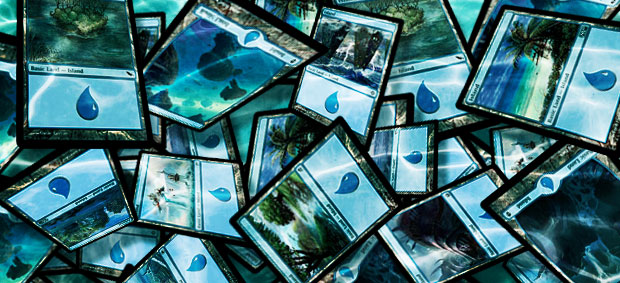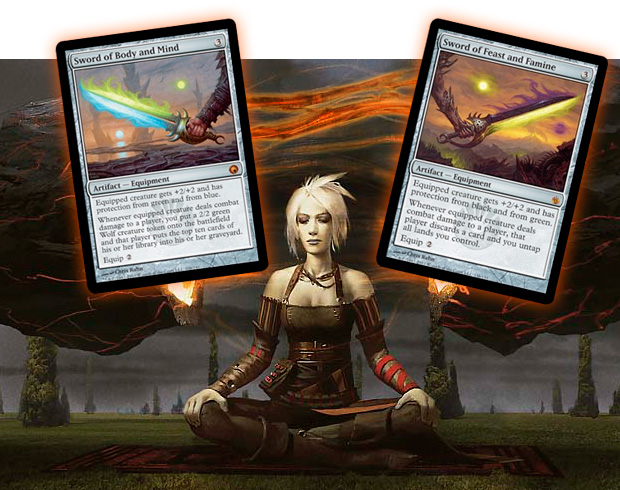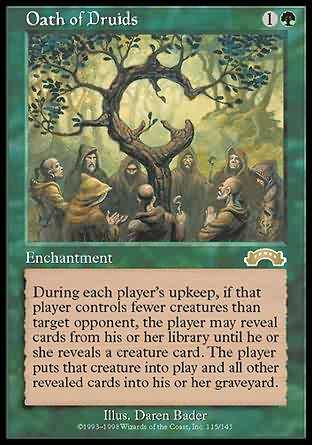So eventhough I did a review in the last couple days, I'm doing another one.
The game of the moment is: Vampire: The Eternal Struggle

The game was released in 1994, was originally called Jyhad, and was created and produced (at least intially by) Wizards of the Coast. This was Richard Garfield's follow up to Magic the Gathering. Now, I'm going out on a limb here when I say this, but this game was produced at the beginning of the CCG boom created by Magic, and I think this was an attempt at expanding Wizards of the Coast (as opposed to later productions, made to both flood the market and give Wizards ore control over their competition).
The Wikipedia article can be found here. Here are some of the highlights.
"Vampire: The Eternal Struggle, published as Jyhad in the first or "Limited" edition and often abbreviated as VTES, V:TES or V:tES, is a multiplayer collectible card game set in the World of Darkness. It is published by White Wolf, Inc."
"The game was designed in 1994 by Richard Garfield and initially published by Wizards of the Coast. As Garfield's first follow-up to his popular Magic: The Gathering collectible card game, he was eager to prove that the genre was "a form of game as potentially diverse as board games" In 1995 the game was renamed from Jyhad to Vampire: The Eternal Struggle to increase its appeal and distance itself from the Islamic term Jihad . After the 1996 Sabbat expansion, Wizards of the Coast abandoned the game, and in 2000 White Wolf took over development. It is thus one of the oldest collectible card games in existence."
"White Wolf announced that Vampire: The Eternal Struggle would cease production on the 10th of September, 2010."
"Richard Garfield noted that the experiences he had made with the Magic: The Gathering collectible card game had helped him to improve his design of the game. In an interview with Robert Goudie, Garfield particularly notes dedicated multi-player (3+) rules, a lack of "land cards", and a more rapid card drawing mechanism (cards normally being replaced instantly after being played)."
Interesting, and I think further proof that this game was different from Wizards later attempts at flooding and control. The article continues:
"What sets VTES apart from most other collectible card games is the strong group play element. In general a player will concentrate on the player to his immediate left, his prey, and a player who succeeds in ousting his prey receives a strong boost by gaining 6 additional pool. This boost of resources might possibly enable him to eventually "sweep the table" (gaining momentum with every kill) and oust every other player. Thus there is a tendency for players to help weaker ones to frustrate the stronger players' dominance. This ensures that most players stay in the game longer, instead of the playing field being reduced quickly to those with the best cards and the greatest skill."
"These conditions create a game where players are almost always interacting with the other players for both short- and long-term goals instead of simply waiting for their turns. VTES is a game of negotiation, skill, and deck-building. Deals and alliances, both for the moment or for the whole game, can play a big role. A whole classification of cards, political cards, are designed with this in mind. When a vote is called each player can cast votes, either by using votes granted from cards in play (typically from vampires with a 'title' such as Princes & Archbishops) or by playing cards from the hand."
Having played and still possessing some Vampire cards/decks, I can agree. The game has some advantages over Magic, but falls short of the Magic 2.0 experience Richard Garfield seemed to be aiming for. My overall review follows the last notation from the Wikipedia article, sets and expansions:
"Sets and expansions
White Wolf releases VTES cards in base sets, expansion sets and mini expansion sets. The main difference between these are the size of the set and the number of reprints.
- Base sets contain booster packs as well as a number of pre-constructed starter decks (ranging from 3 to 6). The starter decks contain 89 cards (with 77 library and 12 crypt cards) as well as a rule booklet. The booster packs contain 11 cards (in newer sets, often with 7 common, 3 vampire and 1 rare card, but refer to the table below). The base set should provide a new player with a number of cards to be able to build a wide variety of decks. A base set usually contains a high percentage of reprinted cards from earlier expansions.
- Expansion sets contain booster packs and may contain a number of pre-constructed starter decks. The distribution of cards in boosters and starters is similar to a base set. They feature also a particular theme. New players are usually not able to build a large number of different decks with only cards from this expansion's boosters due to the lack of basic cards provided either in the starters or in a base set. The number of reprints is low and usually restricted to the pre-constructed starter decks.
- Mini-Expansion sets contains only booster packs and the number of cards are restricted to 60 new cards (20 rare, 20 uncommon and 20 common cards).
| Expansion Name | Type | Symbol | Code | Release Date | Total cards[s 1] | New cards[s 2] | Booster distribution |
| Jyhad | Base | (none) | Jyhad | 16 August 1994 | 437 | 437 | 11C, 4V, 3U, 1R |
| Vampire: The Eternal Struggle | Base | (none) | VTES | 15 September 1995 | 436 | 6 | 11C, 4V, 3U, 1R |
| Dark Sovereigns | Expansion | Gothic window | DS | 15 December 1995 | (173) | 173 | 8C, 4V, 3U |
| Ancient Hearts | Expansion | Eye of Horus | AH | 29 May 1996 | (179) | 179 | 6C, 4V, 2U/R |
| Sabbat | Expansion | Calligraphy S | Sabbat | 28 October 1996 | (410) | 340 | 16C, 5V, 5U, 2R |
| Sabbat War | Base | Inverted spiked ankh | SW | 31 October 2000 | 437 (300) | 77 | 5C, 3V, 2U, 1R or 4C, 3V, 3U, 1R[s 3] |
| Final Nights | Expansion | Broken ankh | FN | 11 June 2001 | 386 (162) | 170 | 7C, 3V, 1R |
| Bloodlines | Expansion | Ankh on red blood spatter | BL | 3 December 2001 | (196) | 196 | 7C, 3V, 1R |
| Camarilla Edition | Base | Ankh | CE | 19 August 2002 | 547 (385) | 115 | 5C, 3V, 2U, 1R |
| Anarchs | Expansion | Combined CE/SW Ankhs | Anarchs | 19 May 2003 | 260 (132) | 128 | 7C, 3V, 1R |
| Black Hand | Expansion | Handprint | BH | 17 November 2003 | 286 (136) | 145 | 7C, 3V, 1R |
| Gehenna | Expansion | Stylised Clock | Gehenna | 17 May 2004 | (150) | 150 | 7C, 3V, 1R |
| Tenth Anniversary | Special | Foil "10" | Tenth | 13 December 2004 | 190 | 10 | -- |
| Kindred Most Wanted | Expansion | Gun | KMW | 21 February 2005 | 314 (150) | 162 | 7C, 3V, 1R |
| Legacies of Blood | Expansion | Split ankh (black) | LoB | 14 November 2005 | 461 (300) | 236 | 7C, 3V, 1R |
| Nights of Reckoning | Mini expansion | Plus with circle | NoR | 10 February 2006 | (60+17)[s 4] | 60 | 6C, 3V, 1R, 1X[s 4] |
| Third Edition | Base | Tri-snake biohazard | Third | 4 September 2006 | 537 (390) | 160 | 5C, 3V, 2U, 1R |
| Sword of Caine | Mini expansion | Bundle of swords | SoC | 19 March 2007 | (60) | 60 | 7C, 3V, 1R |
| Lords of the Night | Expansion | Crown | LotN | 26 September 2007 | 295 (150) | 175 | 7C, 3V, 1R |
| Blood Shadowed Court | Special | Silver Ankh | BSC | 16 April 2008 | 100 | 0 | -- |
| Twilight Rebellion | Mini expansion | Tri-snake on Red Star | TR | 28 May 2008 | (60) | 60 | 7C, 3V, 1R |
| Keepers of Tradition | Base | Castle tower | KoT | 19 November 2008 | 457 (398) | 176 | 5C, 3V, 2U, 1R |
| Ebony Kingdom | Mini expansion | Split ankh (white) | EK | 27 May 2009 | (62) | 60 | 4C, 3V, 1R, 3C[s 5] |
| Heirs to the Blood | Expansion | Three blood drops | HttB | 3 February 2010[8] | TBA (168) | 168 | 7C, 3V, 1R |
You can see, the game had a long shelf life. Overall, I'd give the game a C+, and this is for a couple of reasons, but one in particular. Card Variety: B+. Gameplay: B-. And General Enjoyability: C-. I feel like the enjoyability of the game is somewhat limited, as is overall conprehesion, by the setting for the game. Most folks are unfamiliar with it. This limits the games mainstream appeal severely, which makes the games longevity surprising. Its not a bad game, but its not one I'd recommend to casual CCG collectors/players.
Cheers.









































